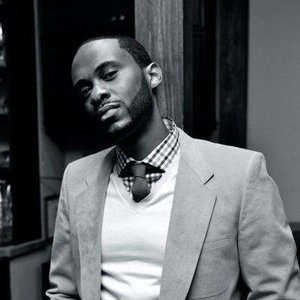Biography
-
Born
10 November 1483
-
Born In
Eisleben, Sachsen-Anhalt, Germany
-
Died
18 February 1546 (aged 62)
There are several artists with this name:
1.) Martin Luther (German pronunciation: ( listen); 10 November 1483 – 18 February 1546) was a German monk, priest, professor of theology and important figure of the Protestant Reformation. He strongly disputed the claim that freedom from God's punishment for sin could be purchased with money. He confronted indulgence salesman Johann Tetzel with his Ninety-Five Theses in 1517. His refusal to retract all of his writings at the demand of Pope Leo X in 1520 and the Holy Roman Emperor Charles V at the Diet of Worms in 1521 resulted in his excommunication by the pope and condemnation as an outlaw by the Emperor.
Luther taught that salvation is not earned by good deeds but received only as a free gift of God's grace through faith in Jesus Christ as redeemer from sin. His theology challenged the authority of the Pope of the Roman Catholic Church by teaching that the Bible is the only source of divinely revealed knowledge and opposed sacerdotalism by considering all baptized Christians to be a holy priesthood. Those who identify with Luther's teachings are called Lutherans.
His translation of the Bible into the vernacular (instead of Latin) made it more accessible, causing a tremendous impact on the church and on German culture. It fostered the development of a standard version of the German language, added several principles to the art of translation, and influenced the translation into English of the King James Bible. His hymns influenced the development of singing in churches. His marriage to Katharina von Bora set a model for the practice of clerical marriage, allowing Protestant priests to marry.
In his later years, while suffering from several illnesses and deteriorating health, Luther became increasingly antisemitic, writing that Jewish homes should be destroyed, their synagogues burned, money confiscated and liberty curtailed. These statements have contributed to his controversial status.
Hymns:
Luther was a prolific hymn-writer, authoring hymns such as Ein feste Burg ist unser Gott (A Mighty Fortress Is Our God), based on Psalm 46. Luther connected high art and folk music, also all classes, clergy and laity, men, women and children. His device for this linking was the singing of German hymns in connection with worship, school, home, and the public arena.
Luther's hymns were frequently evoked by particular events in his life and the unfolding Reformation. This behavior started with his learning of the execution of Johann Esch and Heinrich Voes, the first individuals to be martyred by the Roman Catholic Church for Lutheran views, prompting Luther to write the hymn "Ein neues Lied wir heben an" ("A new song we raise"), which is generally known in English by John C. Messenger's translation by the title and first line "Flung to the Heedless Winds" and sung to tune IBSTONE composed in 1875 by Maria C. Tiddeman.
Luther's 1524 creedal hymn Wir glauben all an einen Gott (We All Believe in One True God) is a three-stanza confession of faith prefiguring Luther's 1529 three-part explanation of the Apostles' Creed in the Small Catechism. Luther's hymn, adapted and expanded from an earlier German creedal hymn, gained widespread use in vernacular Lutheran liturgies as early as 1525. Sixteenth-century Lutheran hymnals also included Wir glauben all among the catechetical hymns, although 18th-century hymnals tended to label the hymn as Trinitarian rather than catechetical, and 20th-century Lutherans rarely use the hymn because of the perceived difficulty of its tune.
Luther's 1538 hymnic version of the Lord's Prayer, Vater unser im Himmelreich, corresponds exactly to Luther's explanation of the prayer in the Small Catechism, with one stanza for each of the seven prayer petitions, plus opening and closing stanzas. The hymn functioned both as a liturgical setting of the Lord's Prayer and as a means of examining candidates on specific catechism questions. The extant manuscript shows multiple revisions, demonstrating Luther's concern to clarify and strengthen the text and to provide an appropriately prayerful tune. Other 16th- and 20th-century versifications of the Lord's Prayer have adopted Luther's tune, although modern texts are considerably shorter.
Luther wrote Aus tiefer Not schrei ich zu dir (From depths of woe I cry to you) in 1523 as a hymnic version of Psalm 130 and sent it as a sample to encourage evangelical colleagues to write psalm-hymns for use in German worship. In a collaboration with Paul Speratus, this and seven more hymns were published in the first Lutheran hymnal, also called Achtliederbuch. In 1524 Luther developed his original four-stanza psalm paraphrase into a five-stanza Reformation hymn that developed the theme of "grace alone" more fully. Because it expressed essential Reformation doctrine, this expanded version of Aus tiefer Not was designated as a regular component of several regional Lutheran liturgies and was widely used at funerals, including Luther's own. Along with Erhart Hegenwalt's hymnic version of Psalm 51, Luther's expanded hymn was also adopted for use with the fifth part of Luther's catechism, concerning confession.
Luther's 1540 hymn Christ unser Herr zum Jordan kam (To Jordan came the Christ our Lord) reflects the structure and substance of his questions and answers concerning baptism in the Small Catechism. Luther adopted a preexisting Johann Walter tune associated with a hymnic setting of Psalm 67's prayer for grace; Wolf Heintz's four-part setting of the hymn was used to introduce the Lutheran Reformation in Halle in 1541. Preachers and composers of the 18th century, including J. S. Bach, used this rich hymn as a subject for their own work, although its objective baptismal theology was displaced by more subjective hymns under the influence of late-19th-century Lutheran pietism.
Luther wrote Ach Gott, vom Himmel sieh darein (Oh God, look down from heaven). He wrote Nun komm, der Heiden Heiland (Now come, Savior of the gentiles) based on Veni redemptor gentium. It became the main hymn (Hauptlied) for Advent. He transformed A solus ortus cardine to Christum wir sollen loben schon (We should now praise Christ) and Veni creator spiritus to Komm, Gott Schöpfer, Heiliger Geist (Come, Holy Spirit, Lord God). He wrote two hymns on the Ten Commandments, Dies sind die heilgen Zehn Gebot and Mensch, willst du leben seliglich. His Gelobet seist du, Jesu Christ (Praise be to You, Jesus Christ) became the main hymn for Christmas. He wrote for Pentecost Nun bitten wir den Heiligen Geist and for Easter Christ ist erstanden (Christ is risen), based on Victimae paschali laudes.
Luther's hymns inspired composers to write music. Johann Sebastian Bach included several verses as chorales in his cantatas and based chorale cantatas entirely on them, namely Christ lag in Todes Banden, BWV 4, as early as possibly 1707, in his second annual cycle (1724 to 1725) Ach Gott, vom Himmel sieh darein, BWV 2, Christ unser Herr zum Jordan kam, BWV 7, Nun komm, der Heiden Heiland, BWV 62, Gelobet seist du, Jesu Christ, BWV 91, and Aus tiefer Not schrei ich zu dir, BWV 38, later Ein feste Burg ist unser Gott, BWV 80, and in 1735 Wär Gott nicht mit uns diese Zeit, BWV 14.
—
2.) Martin Luther McCoy is an American musician and actor. He collaborated extensively with musicians like The Roots and Cody ChesnuTT and appears as one of the six lead characters in the 2007 Beatles musical "Across the Universe" in the role of “JoJo”.
McCoy goes by the stage name of “Martin Luther” in his music career. For his acting work he is credited under his full name.
Martin Luther released his first solo album The Calling in 1999 and followed it with an independent release of his second album Rebel Soul Music in 2004 on his own label Rebel Soul Records; his next release “Serial Thriller” is due for release in early 2008.
Artist descriptions on Last.fm are editable by everyone. Feel free to contribute!
All user-contributed text on this page is available under the Creative Commons Attribution-ShareAlike License; additional terms may apply.












